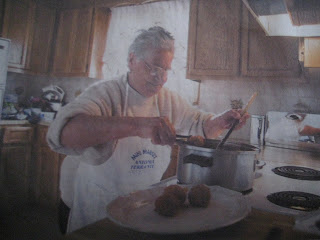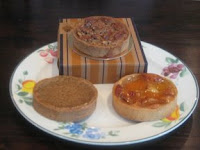
Are you fed up of people telling you that you’re out of time? Probably not, most of us are only too happy to subscribe to such sentiments, but to quote Public Enemy, “don’t believe the hype.” You have more time than you realize; in fact, we have nothing but time, it’s perpetual and constant: it keeps going even when you run out of it.
There is a point to all this and it has to do with a Loblaw’s commercial. In it, Galen Weston Jr. takes time to tell us that we don’t have time during the holidays to make lasagna, and, that it would be easier to simply buy his President’s Choice brand. Nonsense, aside from being much smaller than it appears to be on T.V., the colossal amounts of salt, sugar and unpronounceable additives and preservatives makes me weary of ingestion; it’s much healthier—and tastier—to simply make it your self.
Some believe the origins of lasagna can be traced back to the Greeks. In, The Oxford Companion to Food, Alan Davidson writes that lasagna’s “remote ancestor was the classical Greek laganon; this was a flat cake, not pasta as we know it now, but capable of developing in that direction.” Once the Romans got a hold of it they began to layer the thin sheets of flat breads and cakes with savory ingredients, such as chickpeas and leeks. The first evidence of what we know to be lasagna began to surface in the 13th century, when the medieval rolling pin and wheat dough first met. Rolling the dough flat was the first step in pasta making, and thus, the thin flat pasta sheets began to be used inventively. Once the tomato arrived in Italy in the early 16th century, it was only a matter of time before someone saw fit to combine them.
There are as many ways to make lasagna as there are Italians with opinions; however, there is one common ingredient all lasagnas must possess: wholesome, proper ingredients. Making it in two stages makes it more manageable. I like to make the sauce first, let it sit a day or two in the fridge (which as you know will result in a better tasting sauce) and assemble the lasagna on another day. Lasagna freezes beautifully for up to a month, all you have to do before your guests arrive is turn on the oven. Making lasagna with your kids is also great as you can reward them with all of the pasta pieces that don’t make the puzzle. Serve with a simple green salad.
Lasagna Bolognese
This recipe makes a 9”x15” lasagna and serves 8 to 10 hungry people.

-3 tbsp olive oil
-2 tbsp butter
-2 cloves garlic, chopped
-1 large onion, finely diced
-2 tbsp grated carrot
-2 tbsp celery leaves, finely chopped
-1 lbs ground lean beef
-1/2 lbs ground pork
-1/2 lbs Italian Genoa salami, cut into small 1 cm squares
-1/4 tsp allspice
-2 tbsp parsley
-28 oz canned plum tomato, crushed (1 large can)
-2 6 oz cans tomato paste (2 small cans)
-1/2 cup water
-salt and pepper
-400g ricotta
-1 egg
-1/2 cup grated parmigiano reggiano
- ¼ tsp pepper
-app. 500 g mozzarella, grated
-18 sheets of pasta. (My mother-in-law likes to use catelli lasagna noodles, but feel free to use any you like.)
Directions:
Cook bacon over medium heat until done, 7 to 8 minutes. Add oil, butter, garlic, onion, carrot and celery and continue cooking over medium heat for 5 minutes. Add ground beef and pork, salami, allspice and parsley and cook until meat is cooked through, about 10 minutes. Add canned crushed plum tomatoes, tomato paste, water, salt and pepper (to taste), stir well and simmer gently, uncovered for 45 minutes until thickened. (The sauce can be made a day or two before.)
In a separate bowl combine ricotta, the egg, parmiggiano reggianno and pepper. Mix well.
Cook pasta according to package instructions and lay cooked noodles out on an old tablecloth to dry making sure pasta doesn’t overlap in order to prevent sticking.
You’re ready to begin the assembly.
Preheat the oven at 375 degrees Fahrenheit. Coat the baking dish with a non-stick spray. Start with the sauce, then a layer of pasta, and then apply some sauce, cheese mixture and a sprinkling of grated mozzarella. Repeat the pasta, meat sauce, cheese and mozzarella layers until the pasta is all used up. Finish the lasagna with the remaining sauce and a generous amount of grated mozzarella. Cover the lasagna with a piece of aluminum foil sprayed with a non-stick spray and bake for 45 minutes or until hot in the center. Let lasagna rest for 10 minutes at room temperature before serving.












































